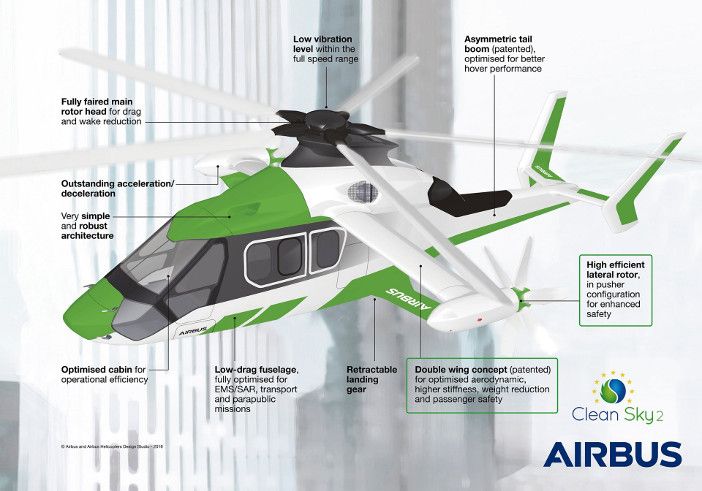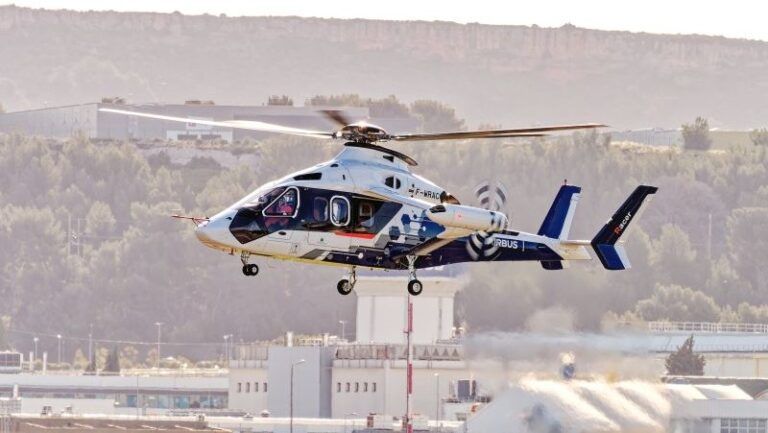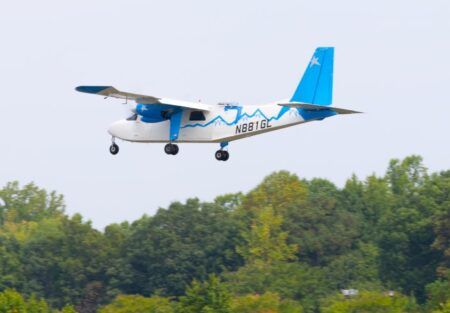Airbus’ Racer high-speed compound helicopter has performed its first flight, in Marignane.
The demonstrator aircraft flew for about 30 minutes, during which time the flight test team checked the overall behavior of the aircraft.
This milestone launches a two year flight test campaign that will demonstrate its high speed capabilities and progressively expand the aircraft’s flight envelope.
Racer (Rapid And Cost-Efficient Rotorcraft) is a compound helicopter, a design that combines fixed wings for energy-efficient lift, lateral rotors for energy-efficient propulsion, and a main rotor to provide energy-efficient VTOL (vertical takeoff and landing) flight capability.
Racer is optimized for a cruise speed of more than 400km/h (250mph) – most helicopters fly at speeds of between 110 to 160mph (177 to 257km/h). One of the demonstrator’s aims is to determine the best trade-off between speed, cost-efficiency, and mission performance.
Several compound helicopters are under development, mainly in the USA for defense applications. Examples include the Sikorsky S-97 Raider.
Development of Racer started in 2017, with a first flight initially planned for early 2020. Reports have blamed delays on supply chain issues with components, including the gearbox.

Bruno Even, CEO of Airbus Helicopters said, “With 90 patents, Racer is the perfect example of the level of innovation that can be achieved when European partners come together. This first flight is a proud moment for Airbus Helicopters and our 40 partners in 13 countries.
“I look forward to watching this demonstrator pioneer high-speed capabilities and develop the eco-mode system that will contribute to reducing fuel consumption.”
The central fuselage of Racer was made in Romania, the side shells and canopy in Germany, the fuel systems and engines in France, the wings from the UK, the landing gear from Lithuania and the rear fuselage from Spain.
Racer has optimized aerodynamics and uses a hybrid-electric engine that Airbus engineers hope will result in a 20% fuel consumption reduction compared to current generation helicopters of the same class. Developed in partnership with Safran Helicopter Engines, the helicopter’s eco-mode allows one of the two Aneto-1X engines to be paused while in cruise flight to cut CO2 emissions.
Racer also aims to demonstrate how its architecture can contribute to lowering its operational acoustic footprint.
Racer builds upon the design of the Airbus Helicopters X3 technology demonstrator which in 2013 broke the world speed record for a helicopter by reaching 472km/h (293mph). X3 aimed to validate the compound architecture, while Racer aims to develop the design into an operational configuration that offers increased capabilities for certain missions, especially where high speed is advantageous.





